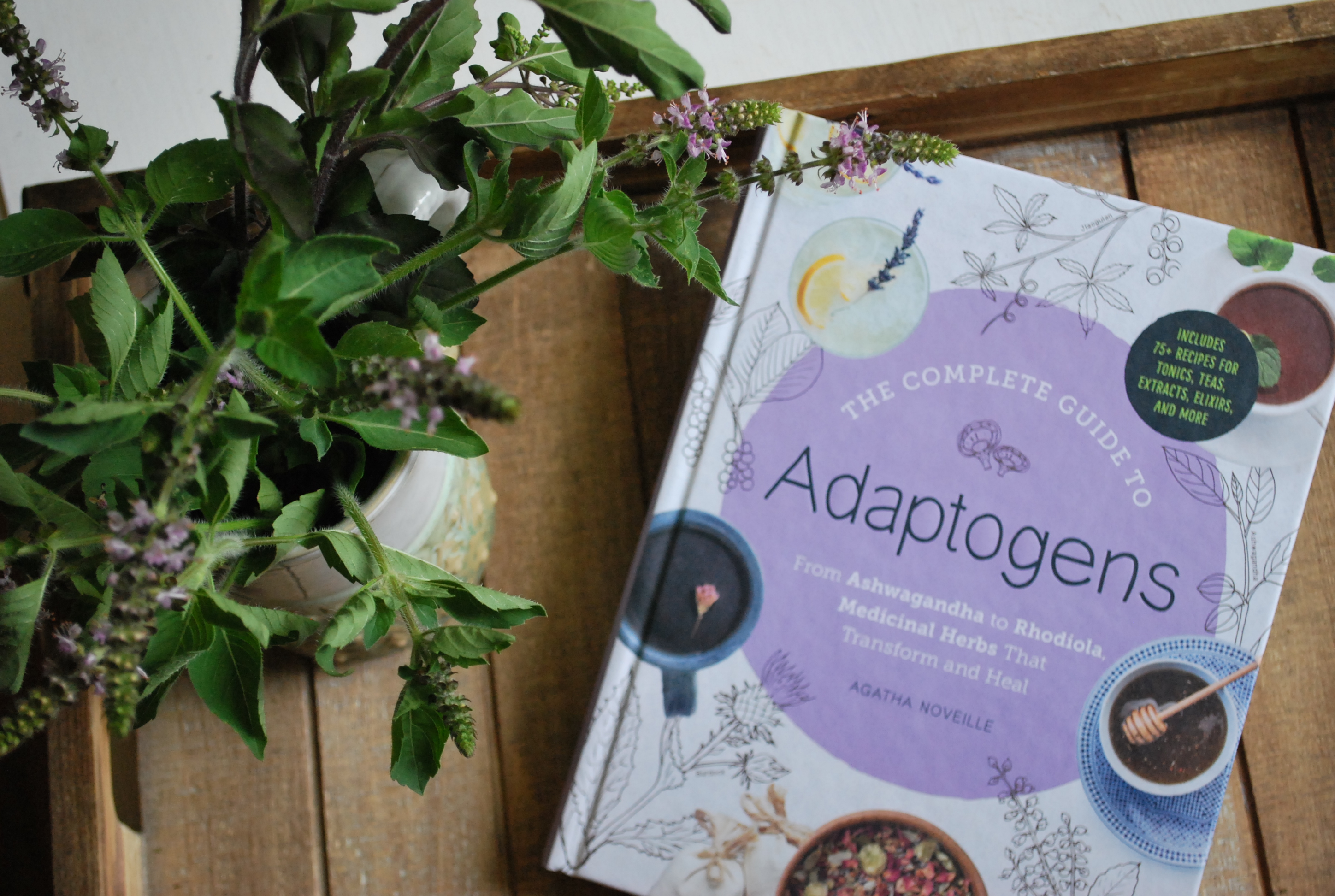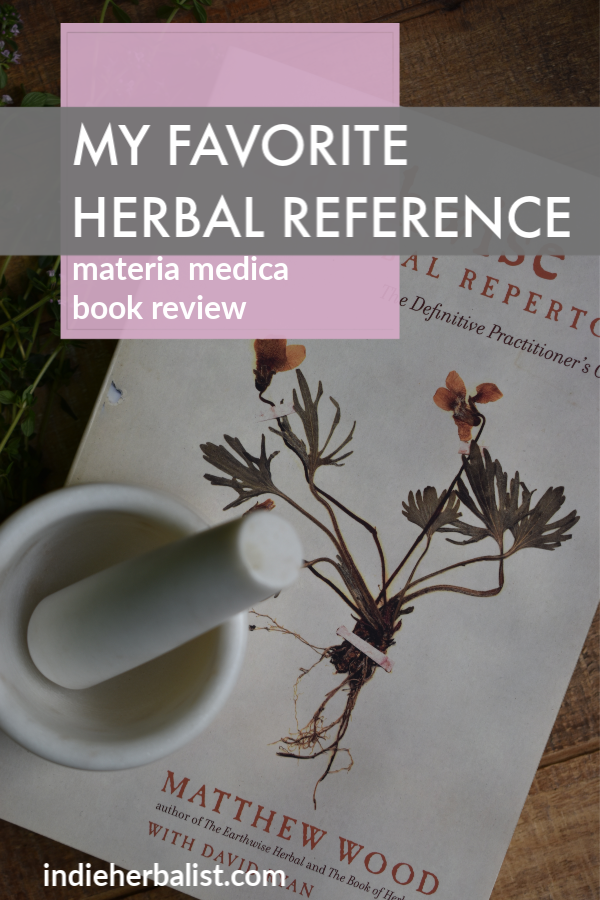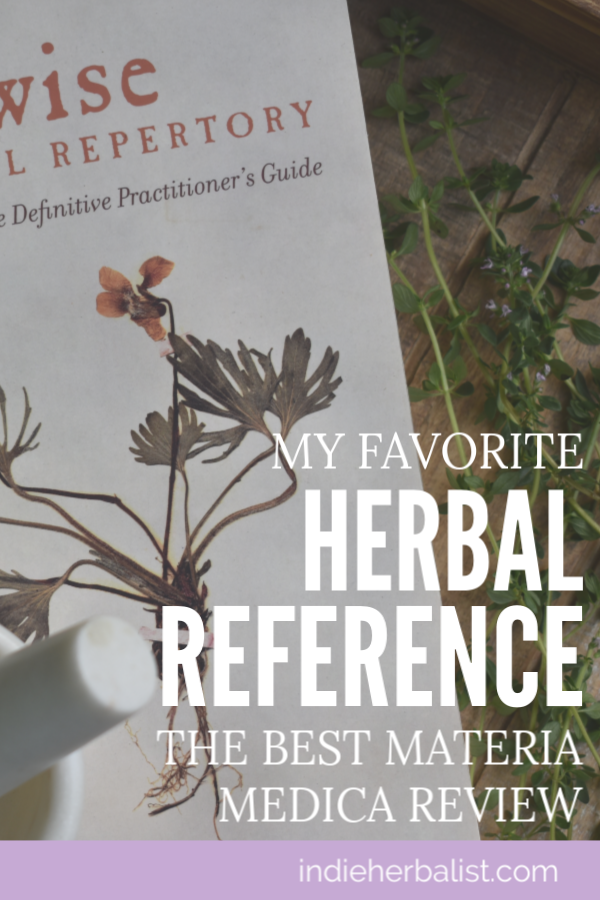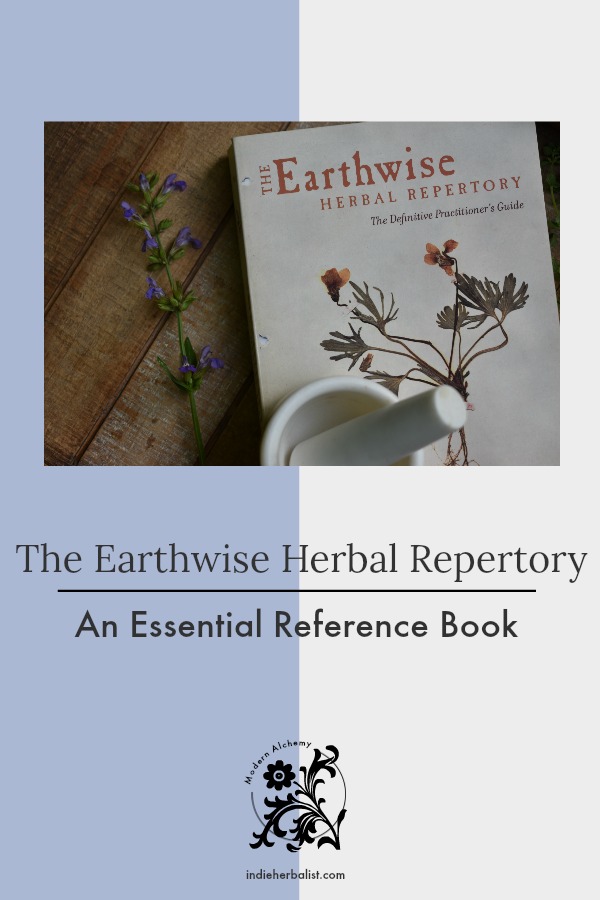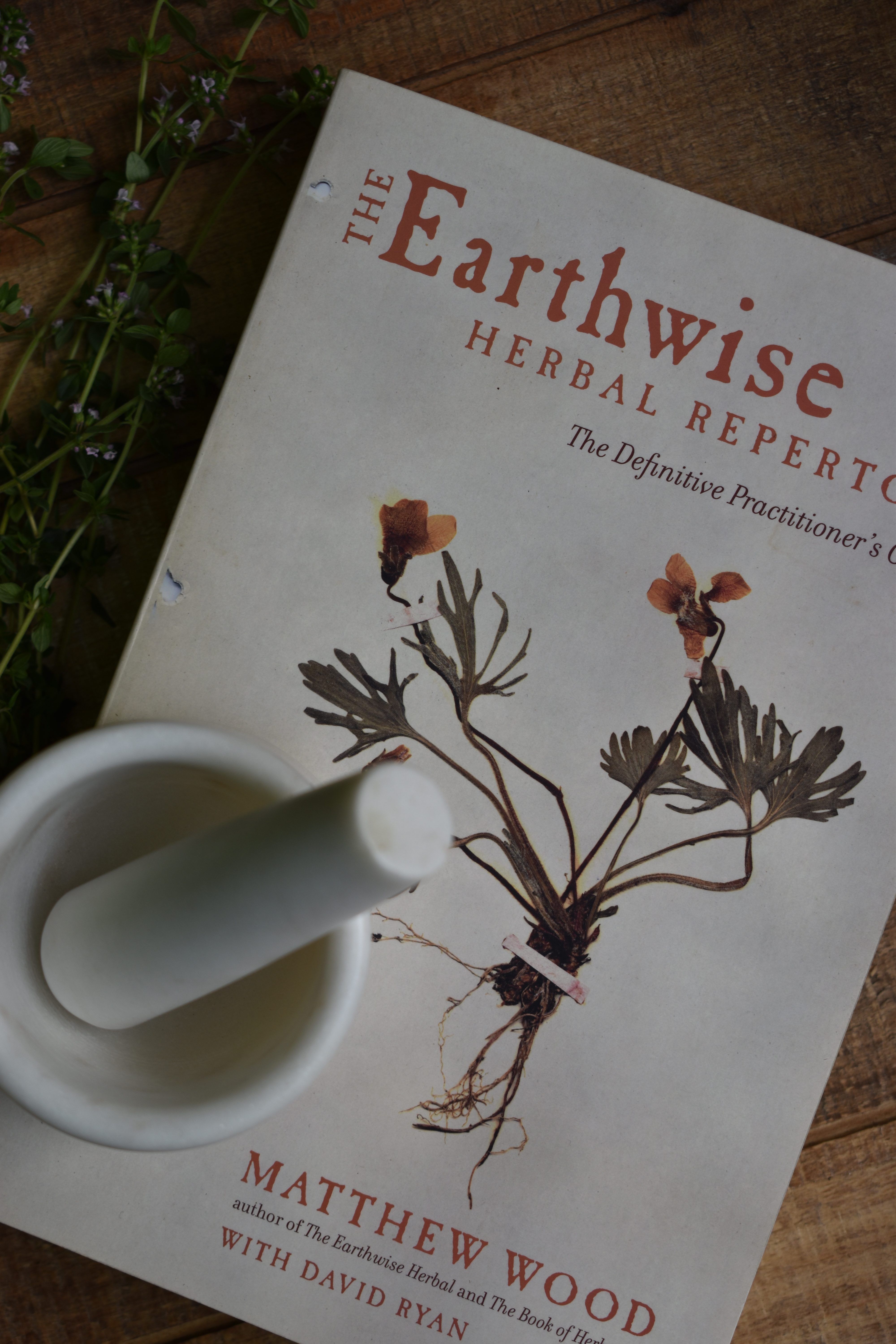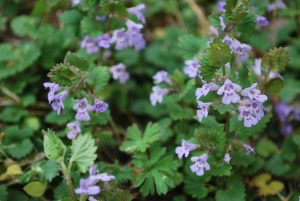Links contained in this post and elsewhere on my website may include affiliate links. When you make a purchase through these links, I earn a commission at no additional cost to you. I only link to products and services that I love - and that I think you will love, too!
This is part of a series about my home herbalist library. Having a large selection of reliable, accurate books is vital for learning herbalism. Take a peek at my full library here, and read on to learn more about The Earthwise Herbal Repertory!
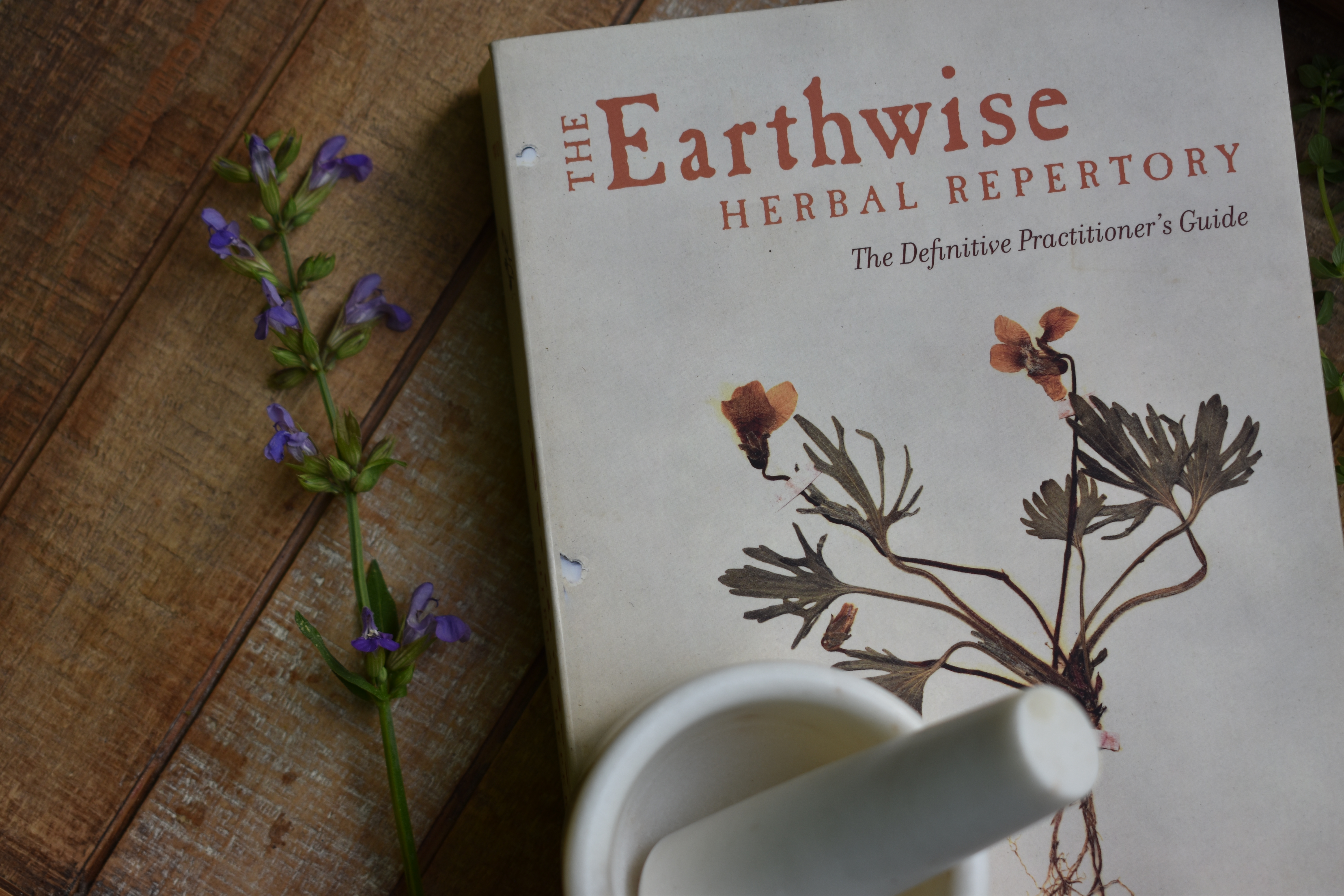
I think every herbal household needs a copy of this book.
You’ve probably seen long lists of herbs online for every imaginable topic. You know the type: herbs for allergies, herbs for flu, herbs for headaches, herbs for this that and the other. . .
Unfortunately, each list is nothing more than a lump of herbs with very little information about how to differentiate what’s useful, why it’s useful, and when it’s most applicable.
As an example, take herbs for coughs. A short list might include: elecampane, cherry bark, mullein, violet, marshmallow, thyme, and pleurisy root. But where to start?
How an Herbalist Thinks
At this point, you need to begin thinking more like an herbalist. There are different types of coughs, and each herb is best suited to a particular kind of cough.
So, an herbalist looks at the cough for clues.
- Is it a dry (unproductive) cough with no mucus?
- Perhaps it’s a wet (productive) cough with lots of mucus.
- Is it a repetitive, hard cough that makes your ribs hurt?
- On the other hand, it could be a ticklish, annoying cough.
After assessing the situation, we match the characteristics of the herb with the profile of the cough.
So, for a dry, irritating cough an herbalist might consider marshmallow, violet, or pleurisy root. These herbs are moistening and calming.
For a wet, congested cough, an herbalist might consider pairing angelica, elecampane, or horehound. These herbs are drying and help tonify the lungs.
What’s in the The Earthwise Herbal Repertory
That’s exactly why this book is so important for home herbalists. It’s a quick, at-a-glance reference that doesn’t over-simplify. It provides:
- an introduction to constitutions and tissue states (how herbs and people are matched)
- herbal keys for selecting a good match
- sections organized by organ/body system; chronic conditions; and acute conditions
- a thorough index that makes referencing a specific condition or body system simple and quick
For best results, you should be comfortable with the scientific names for herbs. The book uses these to make sure there’s no confusion about the specific herb being discussed.
Ready to add it to your bookshelf? Buy a copy of The Earthwise Herbal Repertory on Amazon!
About Agatha
Thanks for visiting my blog! I’m an herbalist and author in Atlanta, Georgia. My popular cookbook about herbal adaptogens is available in English and German. Find out more about my book here. It’s available on Amazon, through Barnes and Noble, and by request at your favorite local bookshop!
